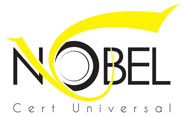Divers in Mexico have discovered the largest known underwater, flooded cave in the world. The discovery could reveal more about the pre-Hispanic, ancient community that existed in the region. The Yucatan peninsula, where the cave is located, still holds treasures from the ancient Mayan community.
The cave is made of two massive underwater caverns that are connected. The cave stretches across 216 miles, according to the Gran Acuífero Maya (GAM), the team of explorers who discovered the cave.
The cave was discovered near the beach resort of Tulum, reported Reuters. The two caves, Sac Actun and Dos Ojos, measured at 163 miles and 52 miles, respectively. Until the discovery of the connection between the two caves, the largest underwater cave in the world was the Ox Bel Ha, which stretched 168 miles long, according to the National Speleological Society. But now, the Sac Actun cave system is the largest known underwater cave on Earth.
The discovery “allows us to appreciate much more clearly how the rituals, the pilgrimage sites and ultimately the great pre-Hispanic settlements that we know emerged,” Guillermo de Anda, director of the GAM, told Reuters. He called it an “amazing” find that would help to better understand the Maya civilization.
The discovery is the result of decades of work touring hundreds of miles of underwater caves in the state of Quintana Roo in Mexico, according to the exploration director, Robert Schmittner. Schmittner has been exploring the Sac Actun cave for 14 years. “Now,” Schmittner said in a statement, “everyone’s job is to conserve it.”
Finding a cave such as this one would have required “painstaking exploration,” according to Thomas Iliffe, marine biologist who studies marine life in underwater caves from the University of Texas A&M at Galveston. The complex tunnels branch off in different directions, there are lower and upper level passages and getting lost can be fatal. “These are really maze-like systems,” Iliffe, who was not involved with this discovery, told Newsweek.
To avoid getting lost, explorers create maps of the underwater passages. The divers often compare the maps of different caves by overlaying them in an attempt find locations where connections between caves might exist, according to Iliffe. They focus on exploring those areas to find passages where caves connect.
Tulum was a walled city of Mayan culture located in the State of Quintana Roo, southeast of Mexico, on the coast of the Caribbean Sea. It is currently a major tourist attraction of the Riviera Maya and next to it is the modern population of the same name, Tulum.
The underwater caves are often linked to sinkholes or underground natural wells, which are known as cenotes. The Sac Actun cave system is, in part, a massive network of cenotes that are essentially flooded sinkholes—hence why the caves are called flooded caves.The spectacular network of the cenotes throughout the Yucatan peninsula has monumental relics from the ancient civilization, according to Reuters. In 2014, human bones were discovered in a cenote, where archaeologists suspect the ancient dead were buried, reported National Geographicat the time. Other human remains discoveries have had evidence of being sacrificed in the cenotes. Artifacts including water pitchers, jade beads, shells and stone tools have also been discovered in the depths of the underwater sites.
Explorers from GAM hope to find a connection between another 11-mile cenote system and the Sac Actun—which would make the largest underwater cave’s size slightly bigger. The 11-mile cenote system has been dubbed “the mother of all cenotes,” located north of the Sac Actun cave. Though that system of cenotes hasn’t been connected to the Sac Actun, but according to GAM, explorers are close to discovering the connection between these two systems as well.
“This immense cave represents the most important submerged archaeological site in the world,” de Anda said in a statement. This cave system has “documented evidence of the first settlers of America, as well as extinct fauna and, of course, the Mayan culture.

